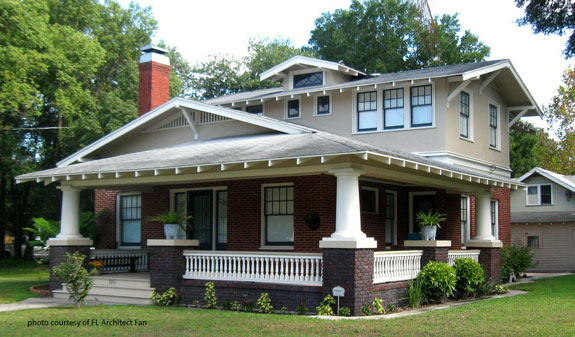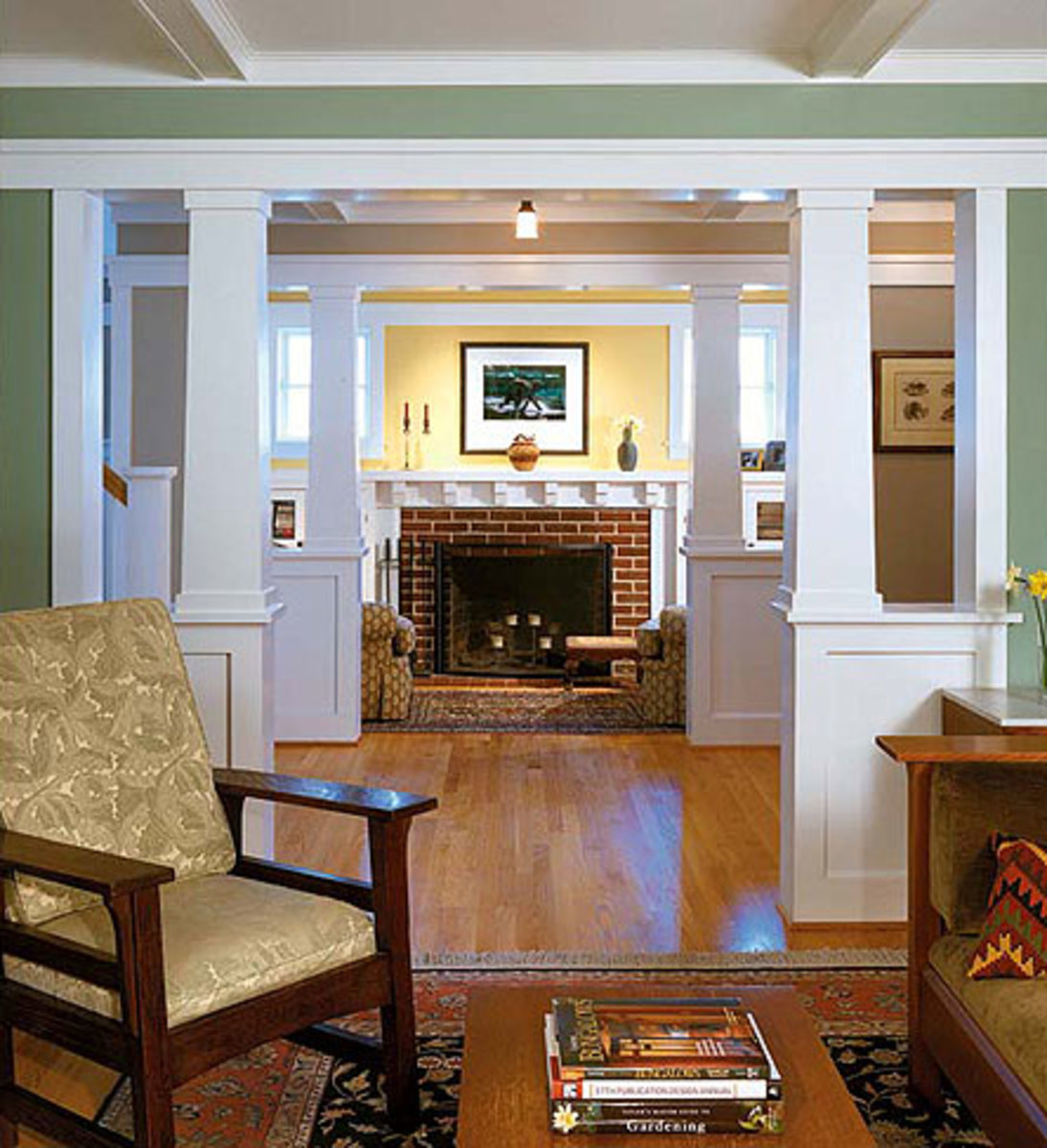Gamble House Pasadena, California Wikipedia
Table Of Content

They used native materials, natural color schemes, and designs and patterns inspired by the natural world. Horizontality and right angles were prevalent in most examples, and interiors often emphasized simplicity in an open floor plan with built-in furniture. Plus, the interiors were decorated only with handmade objects with some definite purpose. Many of the Craftsman homes are bungalows or 1.5-story homes with covered front porches. “The style is abundantly unique with exposed beams, stained wood trim and doors, long overhanging eaves, low sloped roofs, and often a combination of painted wood and stucco exteriors,” Grochowski says. Built-in seating and nooks, abundant paneling, and plenty of other woodwork detail cement the Craftsman home design.
Gamble House (Pasadena, California)
Designed by the AD100 firm Charlap Hyman & Herrero, that space, a reprieve from the city’s white-box galleries and slick hotels, has been the site of many gatherings. But for Johnson, there’s something particularly special about entertaining at home. Objects are enhanced by the lives lived around them.” In the case of her living room, those objects include works by Judy Chicago, Awol Erizku, Seth Cameron, and others from her growing roster of talent.
of the Best Home Decor Shops in Los Angeles, According to Top Designers
The Gamble House, also known as the David B. Gamble House, is an iconic American Craftsman home in Pasadena, California, designed by the architectural firm Greene and Greene. Constructed in 1908–1909 as a home for David B. Gamble, son of the Procter & Gamble founder James Gamble, it is today a National Historic Landmark, a California Historical Landmark, and open to the public for tours and events. There are many types of architecture within the Arts and Crafts style, including Craftsman and Bungalows.
'Architectural Jewel': Century-Old Bay Area Craftsman Designed by Bernard Maybeck - Realtor.com News
'Architectural Jewel': Century-Old Bay Area Craftsman Designed by Bernard Maybeck.
Posted: Wed, 20 Dec 2023 08:00:00 GMT [source]
Is Craftsman style timeless?
He educated his readers in the Arts and Crafts style and inspired the building of simple-style houses known as bungalows or craftsman homes. This movement also inspired mission-style furniture, popular on America’s east coast in the late 1890s. You may have noticed that the Arts and Crafts movement is having a bit of a moment, with some of today’s naturalistic wallpapers and fabrics, rustic furniture and pared-back interiors seeming to have their roots in this style.
In the early 1900s, developer Herberg J. Hapgood built several Craftsman-style homes, many from stucco, that comprise the lakeside borough of Mountain Lakes, New Jersey. Residents were called "Lakers." The homes followed signature styles, including bungalows and chalets. Architect David Owen Dryden designed and built many Craftsman California bungalows in the North Park district, now a proposed Dryden Historic District. The 1905 Marston House of George Marston in Balboa Park was designed by local architects Irving Gill and William Hebbard. The term Arts & Crafts refers to a broad social and artistic movement that took shape in Great Britain and Europe in the middle of the 19th century and then leapt the Atlantic to garner wild acclaim in the United States at the turn of the 20th century.
Everything You Need To Know About Arts And Crafts Homes
This included replacing the non-original windows with steel reproductions of the original frames. The Arts and Crafts house style is one of the most recognizable and popular throughout the United States. The addition of a long, narrow front porch and a projecting gable emphasize the entry on this Craftsman-style home, giving it a standout appearance from the street. Olive green, cream, and an unexpected purple hue combine to make a charming, one-of-a-kind color palette. The bold scheme looks right at home with the renovated bungalow's front yard garden and landscaping.
Historic details in Berkeley, California
Some of the key characteristics of this style of home can be found just by looking to the exterior. Rooftops are either sloping down from a centerpoint of the house, or are angled halfway down at an obtuse angle to help guide the runoff of rain and melting snow away from the home since these houses are often found in colder climates. Below, we investigate Arts and Crafts house style – this prettiest of house styles – and how to make the most of it. Throughout, dMFK Architects aimed to draw attention to the building's original structure including its iron columns and shallow, barrow-vaulted concrete ceilings enclosed in corrugated iron shuttering.
In the warmer months, these homes also look great with a lattice of ivy outside or a garden in the front yard.
Bungalow
This home style started to debut on the British side in the late 19th century, more specifically 1860s. As a response to the withering quality of homes in the mid 19th century, designers began working to construct houses that had a more ornate look with angled rooftops, columns, porches, and beautified exteriors. An Arts and Crafts-style home is a small-to-medium sized, single family home that usually is a square shape with two stories. The wood joinery and front porch are the most apparent traits of a Craftsman style home, but the distinct design of an Arts and Crafts house has been adapted to suit homeowners needs since their earliest development in the late 19th century. Inside, common fixtures include built-in shelving, fireplaces, and segmented rooms as opposed to an open floor plan.
Consider siding options that at least appear to be hand-worked natural materials. Resist the urge to enclose your porch for a more cozy sunroom, or at least make the sunroom as well-integrated with the outdoors as you can, perhaps by giving it a transitional porch or deck of its own. House & Garden says that the Arts and Crafts movement is just as relevant to the digital age as it was to the beginning of the industrial age. But tastes and materials have changed, of course, so the interpretation of such concepts as "honest materials" and "refined simplicity" will have evolved as well.
Grochowski notes that the premium for this type of artistry is “roughly 20 to 30% more than a typical mass-produced home of another style.” This is in part because the master craftspeople are rare. By the 20th century, the bungalow-style models were dotting Southern California and the midwest—beckoning buyers with craftsmanship and curb appeal. Craftsman style is synonymous with “cozy, homey and unpretentious,” says Susan Yeley, creative director and owner of Susan Yeley Homes in Bloomington, Indiana. " for the people and by the people, and a source of pleasure to the maker and the user." Workers could produce beautiful objects that would enhance the lives of ordinary people, and at the same time provide decent employment for the craftsman.

Heller had been working on his 1907 Craftsman house in Angelino Heights, renovating it room by room, for a couple of years. Realizing he needed assistance in turning his madcap plans into reality, he invited Herrero to work, at least initially, on the primary bathroom. “I’m totally comfortable trying and failing, but I was already in construction and getting out of my depth,” recalls Heller, whose investment interests include the cannabis company Sunday Goods, Yola Mezcal, and the groovy coffee-bar chain Go Get Em Tiger. He and his wife Maria Alataris, also an architect and founder of Maa designs, had lived in Manhattan for 30 years, and now have two teenage kids. “We’re not used to driving to get a quart of milk or to drop a kid off at school.

Morris and Ruskin's notions of good design were linked to their notions of a good society. This was a vision of a society in which the worker was not brutalized by the working conditions found in factories, but rather could take pride in his craftsmanship and skill. Here's what you should know about how this style came to be, its key characteristics, and what to expect in Arts and Crafts-influenced homes. When looking at an Arts and Crafts home, you will find a few key elements that transcend across styles.
This, of course, inspired countless bungalows and Foursquares that still dot the streets of suburbs around the country. The Arts and Crafts Movement in American Craftsman style architecture was focused on the use of natural materials, attention to detail, aesthetics, and craftsmanship. Perhaps the first hint that you're looking at an Arts and Crafts house is the impression of the roofline. Arts and Crafts homes typically feature low and expansive roofs, according to Degnan Design-Build-Remodel. Of course, as with everything else about the larger Arts and Crafts movement (especially its American development), exceptions are the rule.

Comments
Post a Comment